Your basket is currently empty!
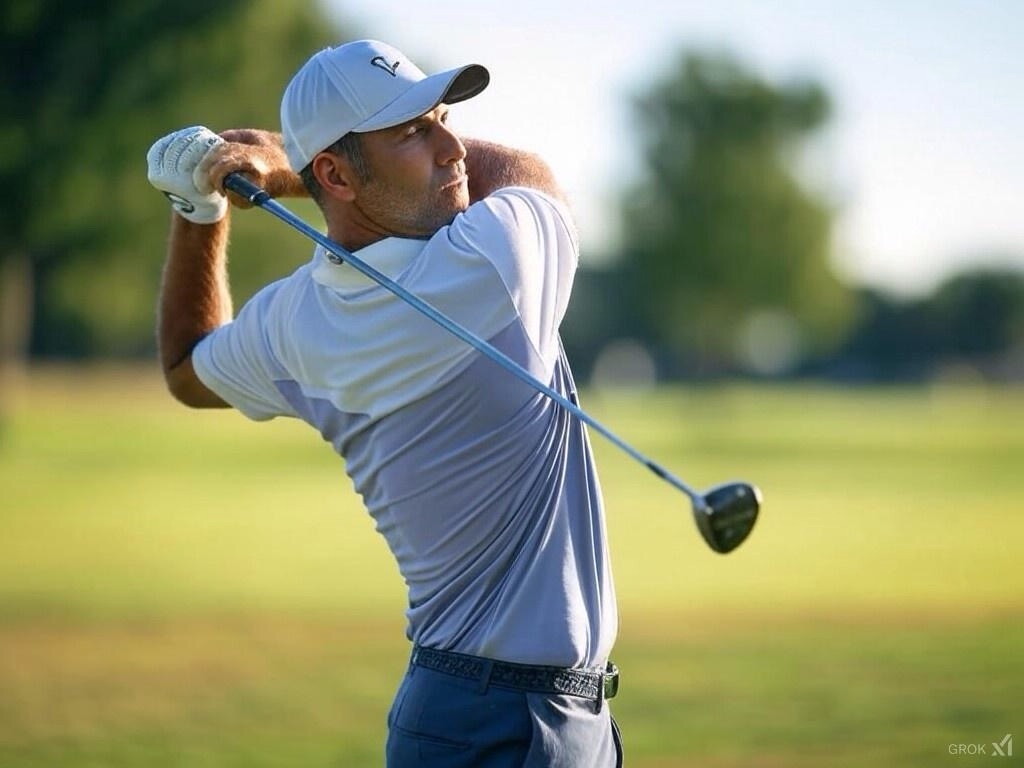
Optimising Swing Dynamics Part 1
Active & Passive Torques
I believe that the proactive and retroactive dynamics of the golf swing as outlined in the previous blog article are relatable to two distinct forms of energy within the dynamic system. They are active and passive torques and moreover…
It is the efficient manner in which elite players combine these torques which allows them to generate prodigious clubhead speed.
When one observes a world class player, it appears that they are generating power with minimal effort. This then is demonstrative of how energy moves about the kinetic chain. That is, via the accruments, transformations and transference of energy in the ‘top-down model’ of the swing.
Passive torques are imposed onto an individuals kinematics via the accruement of elastic energy, or the facilitation of momentums (moving mass). Passive torque dominates early. In transition and early downswing, elite golfers rely on passive torque to conserve energy and build speed through inertia and lag. GRF also contributes, although the extent that this directly affects torques is a little less obvious. GRF operates as a static force and primarily in the vertical, thus cannot directly initiate rotational dynamics (a reason why it is incorrect to assume that ‘energy in the golf swing flows upwards from under the players feet’).
The main contributors to passive torques are inertia & momentum, centrifugal force, segmental separation and sequencing.
The musculature involved in passive torques generally contract statically, as a consolidator to sequencing and kinematics.
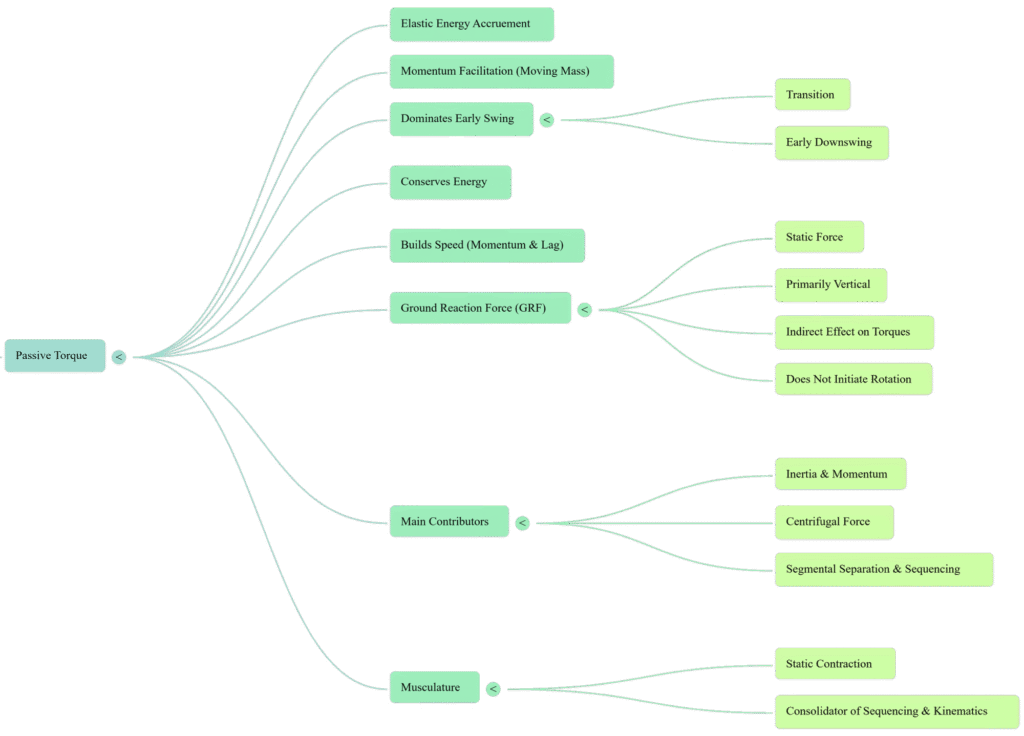
Dynamic torques involve active muscle contractions that directly contribute to the swing’s applied force.
Dynamic torques are generated via intentional dynamic muscular effort which includes: hip and torso, arms and shoulders, wrist and the legs.
Near impact, elite golfers actively uncock their wrists (radial deviation transitioning to ulnar deviation) and supinate / pronate forearms respectively.
This dynamic torque about the wrist, has been shown in empirical research to add significant clubhead speed, contributing as much as 20-30% of the total velocity at impact.
I consider that the hands and wrist remain essentially passive for stock swings, which may seem at odds with the notion of ‘dynamism’ given above. However, there also exists a sub-distinction here between ‘autonomic’ and ‘conscious’ appropriation of dynamic muscle activation. This is a nuanced area when it comes to proactive and retroactive swing dynamics, which is elaborated upon in ‘The Physics & Biomechanics of Golf’, along with training recommendations.
The quadriceps, and glutes contract dynamically to push against the ground, in order to to increase and decrease GRF magnitude in respective legs. Studies have labelled this as “vertical thrust” as the lower body powers the upward and rotational movement of the torso.
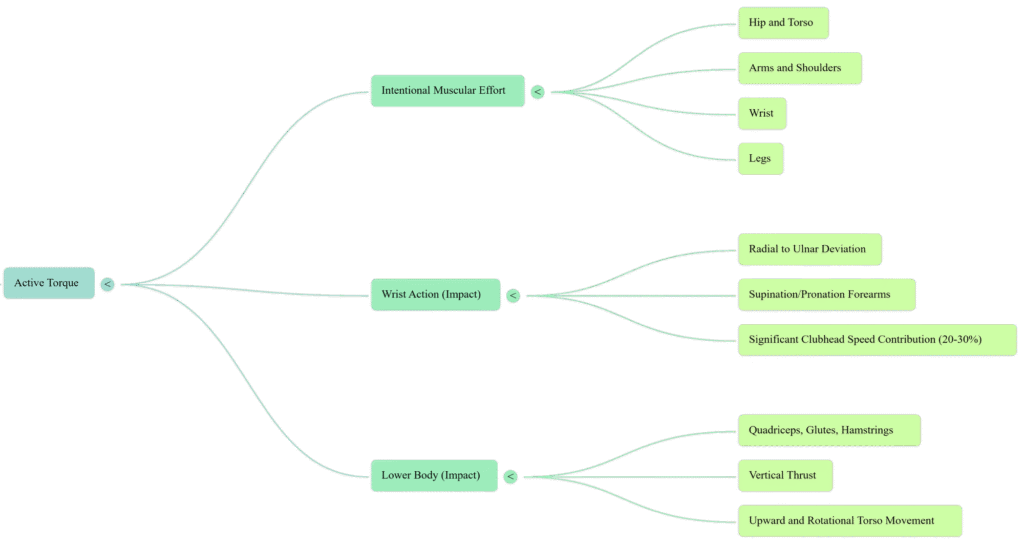
But again this is an oversimplification, implying bottom-up dynamics. The only phase of the swing where ‘bottom-up’ is in any sense true is into impact. Here most of the contractile force imposed on hip pivot by the lead oblique is spent and segmental separation (hips and thorax) tends toward minimum (they catch-up with each other post impact). Prior to impact the lead knee moves into extension driving the lead hip back and is subsequently joined by trail extension through impact. This reactive ‘rebound’ (more on this to follow in future posts) of energy flow, is born as a specific function of sequential dynamics towards the end of the swing. Prior to this any bottom-up dynamics and / or flow of energy, results in the storage of elastic potential. Bottom-up dynamics do not instigate nor drive angular motion, this idea is fundamentally back-to-front.
Hopefully it is starting to become clear how understanding the biomechanics of the golf swing helps inform analysis of it, coaching and learned swing mechanics.
I hope you found something of interest in these early musings from my next book.
As always, if you have taken the trouble to read this blog, many thanks and if you are struggling to put it all together, I can recommend a good book (see link below).
All the best.
The Physics & Biomechanics of Golf
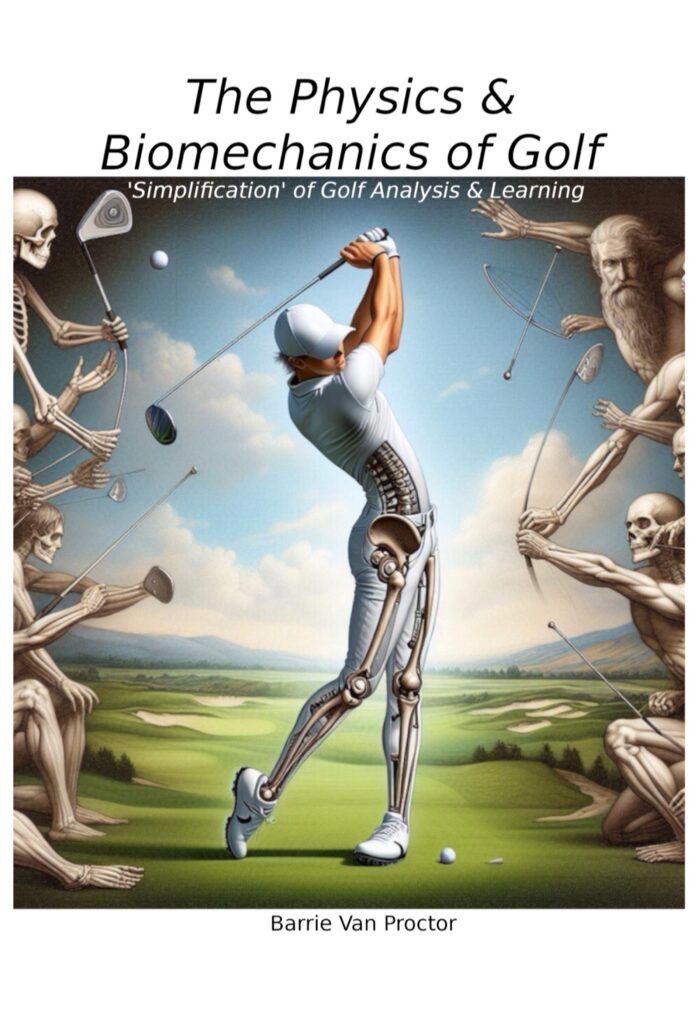
golfbiomechanics.net
We author, publish and sell our books here in the UK, along with our distributors including Amazon. As an Amazon Associate, ‘golfbiomechanics.net’ earns from qualifying purchases on affiliated products. This means that if you click on an affiliate link and make a purchase, ‘golfbiomechanics.net’ may receive a small commission at no additional cost to you. Thank you for supporting this website and helping us continue to provide the best and valuable content!
Discover more from golfbiomechanics.net
Subscribe to get the latest posts sent to your email.
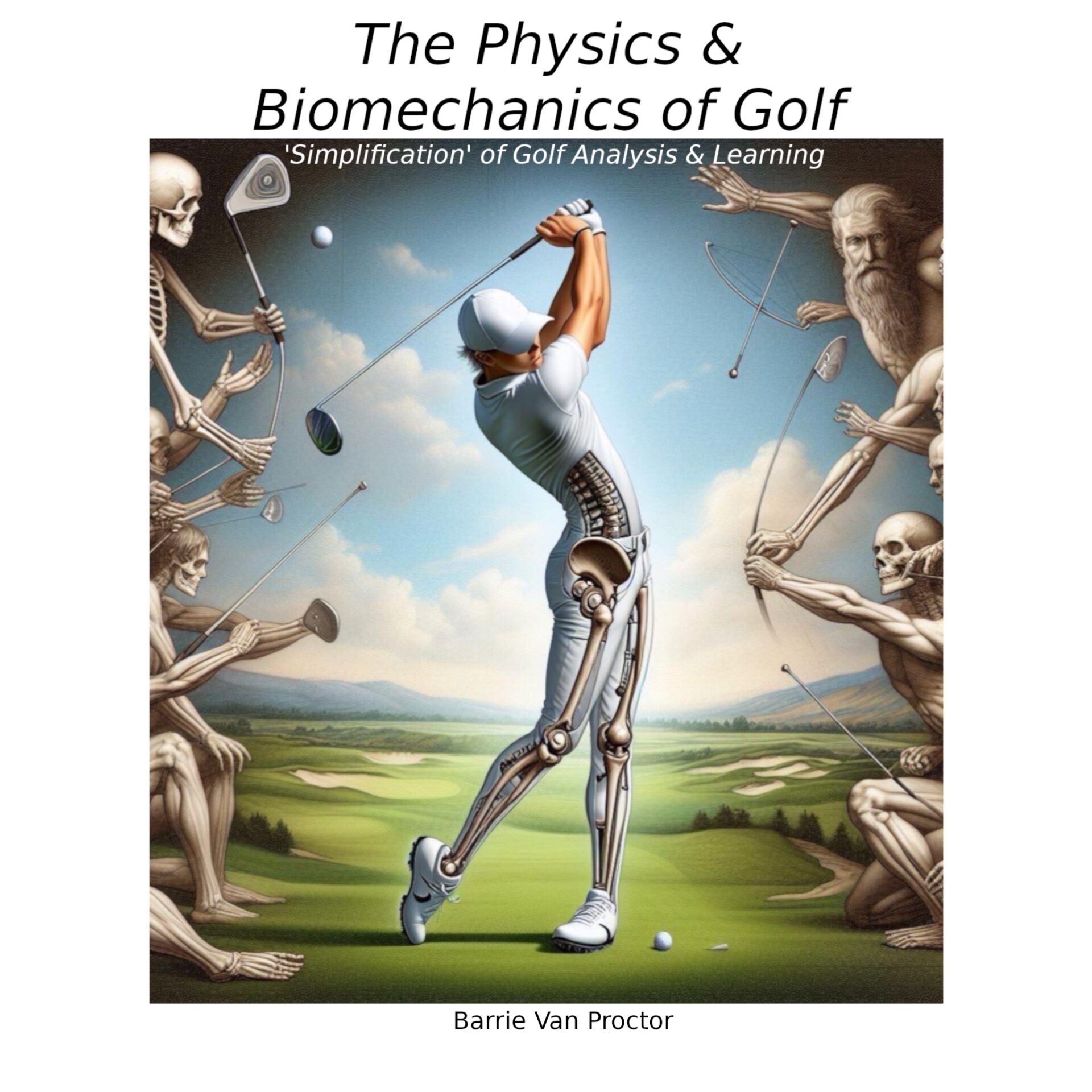
Leave a Reply